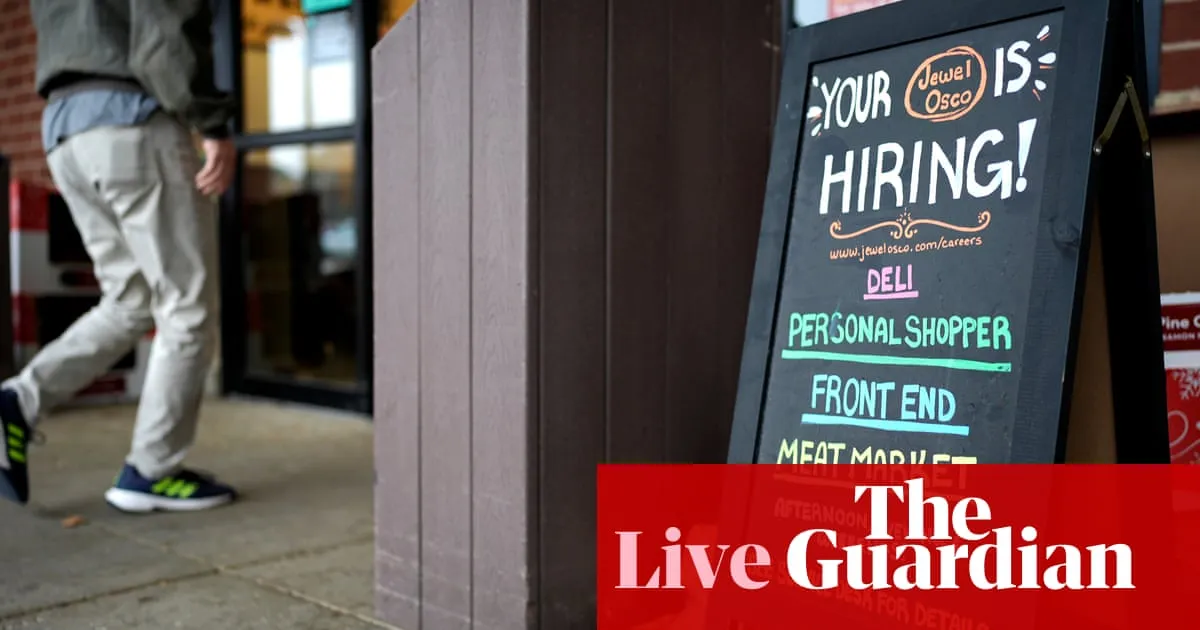
In a recent jobs report, the US unemployment rate has increased to 4.1%, up from 4% in January. While this rise may seem concerning, it is essential to note that historically, this rate remains low. This current rate mirrors the unemployment levels from December 2023. According to the Bureau of Labor Statistics (BLS), the unemployment rate in the US has fluctuated within a narrow range of 4.0% to 4.2% since May 2024.
Despite the rise in unemployment, the US labor market demonstrated resilience in February, adding 151,000 jobs to the economy, a notable increase from the previously adjusted 125,000 jobs reported in January. The unemployment rate remained relatively stable at 4.1%, reflecting little change from the previous month. Although 10,000 federal jobs were lost over the month, these losses were offset by significant hiring in sectors such as healthcare, financial activities, transportation and warehousing, and social assistance.
The recent uncertainty surrounding Donald Trump’s tariff policies has had a substantial impact on global markets. Following Trump's second reversal on tariffs, European stock markets plummeted, with Germany’s Dax index decreasing by 1.9% and France’s Cac 40 down by 1.3%. Meanwhile, the FTSE 100 in London is on track for its worst weekly performance of the year, despite recovering from earlier losses.
Concerns regarding a potential trade war have intensified, with China’s foreign minister criticizing the US for its “two-faced” behavior relative to tariffs on Chinese goods. This rhetoric comes in the wake of disappointing trade data indicating a decline in Chinese imports, further signaling that trade war anxieties are affecting demand.
In the UK, house prices unexpectedly fell last month as fears of a sluggish economy overshadowed expectations of increased activity before the upcoming stamp duty changes in April. This unexpected dip in the housing market illustrates the broader economic challenges that many are currently facing.
In the agricultural sector, Donald Trump’s fluctuating tariff policies are causing chaos for farmers and food producers on both sides of the US-Canada border. John Nickel, a Manitoba hog producer, expressed concern over the unpredictability of tariffs, stating, “This is the biggest challenge we’ve ever faced in over 20 years.” With 25% tariffs on many Canadian and Mexican goods recently imposed and then delayed, uncertainty looms for producers awaiting clarity.
Amid these economic challenges, a Reuters poll revealed that the risks of recession are escalating for all three North American economies—Mexico, Canada, and the US. Out of 74 economists surveyed, a staggering 70% indicated that recession risks have increased due to the chaotic implementation of US tariffs, adding to the uncertainties businesses face.
In addition to trade concerns, Trump has also targeted Russia with potential new sanctions and tariffs, demanding a peace agreement with Ukraine. This development adds another layer of complexity to the current international economic landscape.
Following the jobs report, Wall Street opened lower, continuing the downward trend from previous days. The Dow Jones industrial average declined by 138 points, or 0.33%, while the S&P 500 index and the Nasdaq Composite also showed slight decreases. This market response indicates that the jobs report has not significantly shifted investor sentiment, as fears of a trade war continue to dominate.
Experts suggest that the forthcoming jobs data may reveal more about the impact of recent federal government job cuts. Sara Pineros, an economist at CEBR, anticipates that the non-farm payroll report for March, set to be released on April 4, will likely reflect the recent changes in employment policy. The ongoing uncertainty surrounding US economic policy and tariffs is expected to pose risks to the labor market and the economy in the coming months.
Economists have varied opinions on the current state of the US jobs market. Thomas Ryan from Capital Economics believes that the modest rise in non-farm payrolls suggests that while the economy started the year soft, it is not heading toward a recession. Conversely, Richard Flynn from Charles Schwab UK described the jobs figures as disappointing, indicating lower demand in the labor market and increased sensitivity to economic data.
In conclusion, as the US unemployment rate rises to 4.1% amidst ongoing economic uncertainties, the implications for the labor market and broader economy remain a focal point for economists and investors alike. The upcoming months will be critical in determining the trajectory of job growth and economic stability.